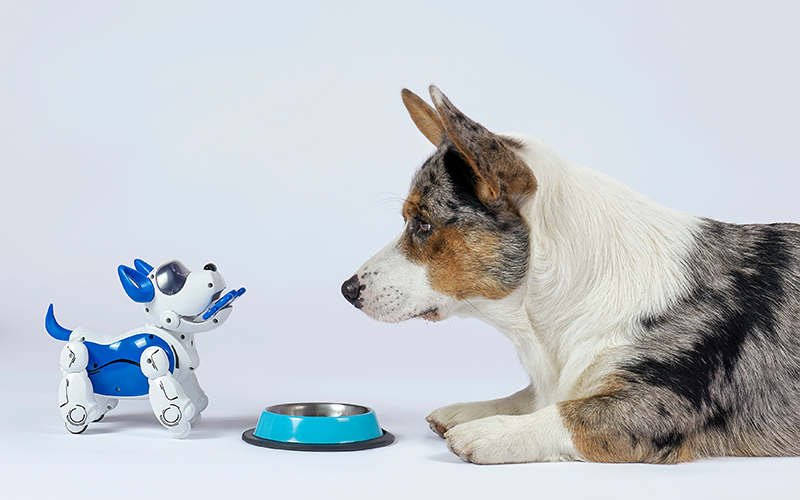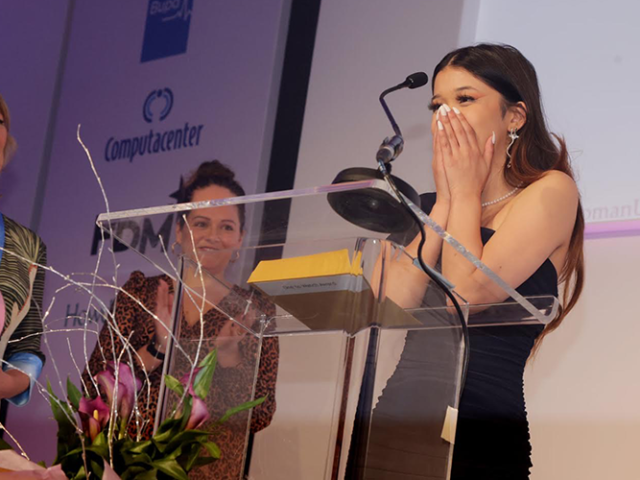Mickaël Achkar, as part of his Master’s project at EPFL, aggregated data concerning canine movements. This data served as the foundation for crafting a robotic dog which, upon movement, possesses the ability to autonomously run without reliance on assistance or motors.
Over at EPFL’s Computational Robot Design & Fabrication Lab (CREATE), overseen by Prof. Josie Hughes, engineers are pioneering innovative methodologies in constructing robots endowed with previously unexplored capabilities. A case in point is the collaborative effort of Hughes and two fellow researchers who employed ChatGPT to conceptualise a robotic gripper tailored for tomato harvesting. Furthermore, Mickaël Achkar harnessed motion-capture data obtained from live dogs to construct a robotic counterpart. To delve into the specifics, Achkar delved into the biological mechanics of dogs to formulate an astute robot design. This culminated in the construction of a prototype that can achieve self-propelled motion, all while remaining inactive in terms of its motors.
“I wanted to engineer a robot with animal characteristics, bearing in mind that animals – like humans – move in a huge variety of ways,” says Achkar. “But most of these movements are executed by just a few joints.” He therefore drew inspiration from animals’ motor control processes to guide him in his robot design.
Achkar had a multitude of options at his disposal – a grasshopper, mouse, elephant, or cheetah, to name a few – yet a dog emerged as the clear and logical choice. “We found a vast dataset on the motion of dogs, and it was even available in open source!” he says. The initial phase involved extracting data pertaining to the harmonious motions of dogs and subsequently structuring this data to enable meaningful condensation. This was accomplished through a technique known as principal component analysis. Essentially, this process encompassed clustering the data into multiple vectors that delineate the primary axes of dog movement. This valuable information was then utilised to define precise specifications for the robotic creation.
Creating the canine
Achkar’s mechanical canine exhibits bilateral symmetry. Each of the robot’s four legs incorporates three joints, and each joint seamlessly synchronises with the others. This particular attribute bestows upon Achkar’s creation the capacity to emulate the locomotion of an actual dog, encompassing its full agility. For the construction of the prototype, Achkar employed metal rods as structural foundations, 3D-printed pulleys as joint components, delicate cables as tendons, and a handful of screws to ensure cohesiveness.
Procuring a treadmill, the engineers embarked on testing their prototype. What ensued was the revelation that once the robot was set in motion, it could engage in self-directed movement without necessitating the activation of its control motors. “At first we thought it might’ve been a fluke,” says Achkar. “So we changed the design slightly and tested the robot again – and it couldn’t run anymore.” Despite this, the research team did end up having to add a counterweight in order for the robot to be able to stay in motion once it started. “The counterweight uses resonance to inject energy,” says Achkar. Francesco Stella, a PhD student at CREATE and the project supervisor, adds: “We designed the robot’s body to be able to respond automatically, much like a trout starts swimming automatically when placed in water.”
Controlling the canine
The control motors of the robot dog, however, remain valuable in expanding its spectrum of motion. For example, it gains the ability to leap and surmount obstacles independently of the counterweight. “We’d like to push our design further with the motors, but for now the prototype isn’t very robust,” says Achkar. This limitation didn’t deter him from subjecting the mechanical dog to various tests, like inserting a stick between its legs to gauge its reaction. Undeterred, the robot promptly resumed its graceful gallop on its own accord. Moreover, when placed on the treadmill, it effortlessly achieves a velocity of 6 km/h.
“Our goal isn’t to compete with ultra-high-tech robotic dogs, but rather to explore bio-inspired robot designs,” says Achkar. “This entails honing a robot’s fundamental design and modifying its passive proprieties so that only simple control systems are needed – all while maximising the robot’s capabilities. What we’ve done here – engineering the joints to work in synergy – has already proven useful for creating robotic hands and other body parts.”
Achkar’s research paper has been submitted to a scientific journal for publication, with its anticipated release in the upcoming months. Having successfully achieved his Master’s degree in robotics engineering, Achkar envisions a return to Montreal. His journey led him from Canada to EPFL after obtaining a Bachelor’s degree in mechanical engineering from McGill University. The choice of EPFL was motivated by its reputation for providing a stellar education and its strategic location within a French-speaking sector of Europe. Moreover, it presented Achkar with the opportunity to delve into the captivating realm of robotics.




